The main reason people take the two and half hour flight north of Shanghai to Xi’an is to see the Terracotta Warriors. But what are these warriors, you ask?
Great question!
This sculpted army of soldiers made of terracotta and each with a different face after individual soldiers was only discovered on 29 March 1974 by farmers who were digging a well about 1.5km from the emperor’s tomb.
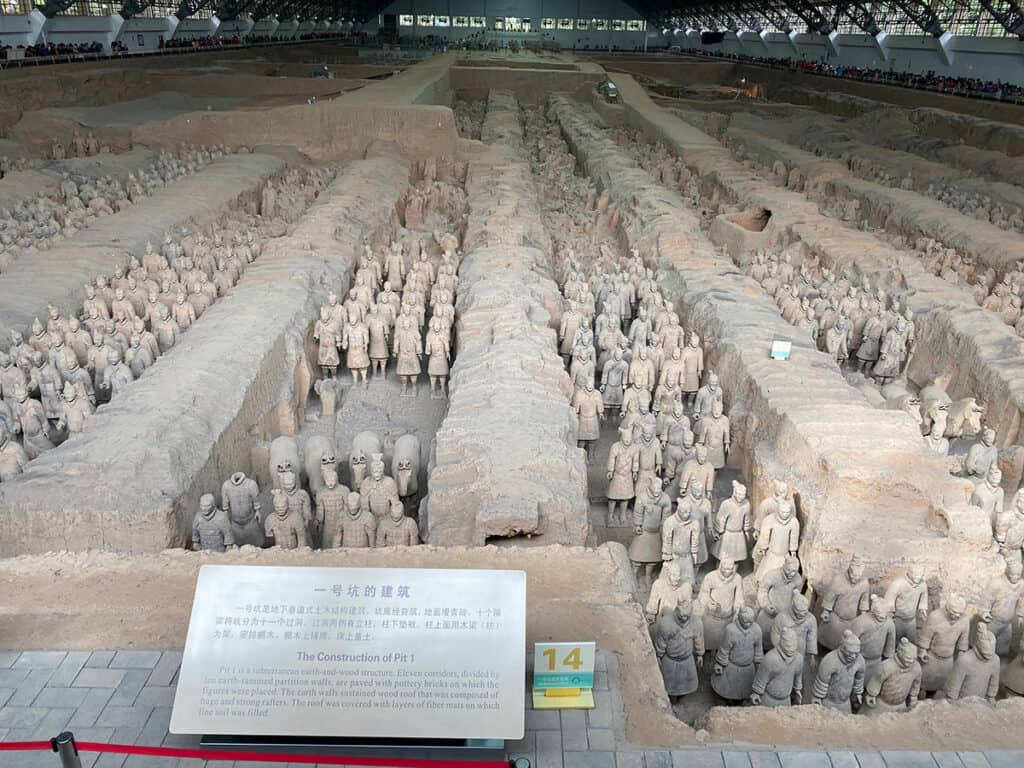
About five metres of earth had built up over the millennia. Clunk! What was that? Oh some broken pottery figurines, this was different to the roof tiles and bits of brac that had been dug up before…
By 1979 nearly 9,000 warriors had been discovered along with 130 chariots, 520 horses and another 150 cavalry horses, most still underground.
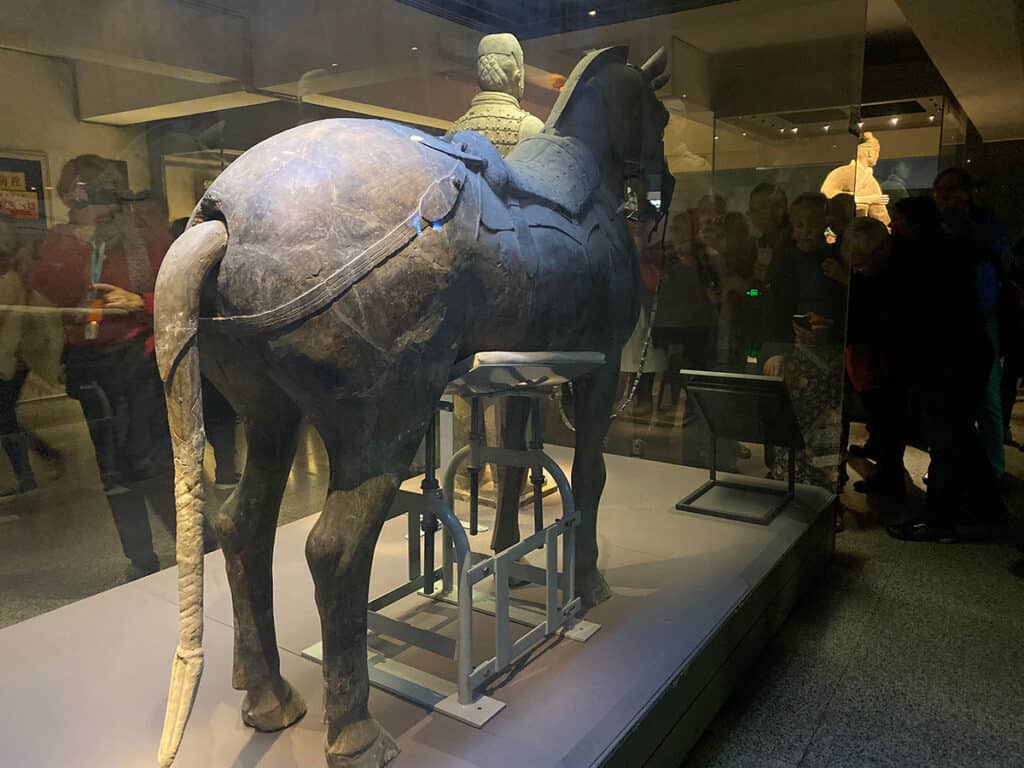
But the ones that have been unearthed have been restored and replaced where they once stood. The archeology is still ongoing and that is part of the reason this site is so popular with 30,000 people visiting on a quiet day and up to 100,000 when the weather’s good.
Ground imaging and core sampling have shown the area to be about 98 sq km.
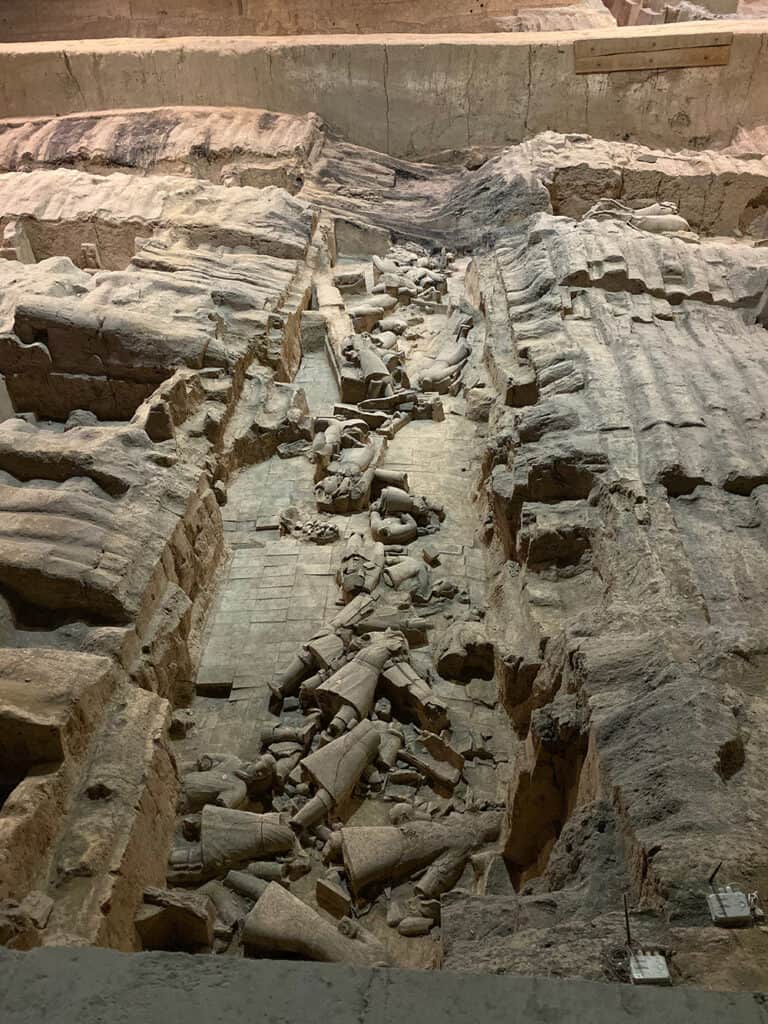
But the history of how the Terracotta army came to be is utterly fascinating – in a country where you’ll see a 3000 year old jade bangle in the museum and so much history it makes our “heritage” corrugated iron shed on Auckland’s waterfront look like a joke (or is it?!)
This army was constructed to protect the burial place of emperor Qin Shi Han, the first emperor of unified China from the Qin dynasty who reigned from 18 February 259 BC to 10 September* 210 BC. But as was the tradition for dignitaries back then, you began construction of your final resting place when you were just a boy. And so he did.
At age 13, when he became king of the Qin dynasty, he found his burial plot and began commissioning artists to sculpt this mass terracotta army. There were up to 700,000 people involved in the construction.
He became the self-titled emperor at the age of 38 after conquering warring states and unifying China in 221BC and ever since the title has been handed down.
He is also responsible for linking up the walls and creating the Great Wall of China which is easily reached from Beijing, which is so iconic and one of the most famous landmarks in Asia. It so huge it can be seen from space, as well as founding a massive national road system. Qin Shi Han is considered one of the most influential people in world history.
But it’s his “army” of terracotta warriors that you’ve come here to read about, so I shall crack on!
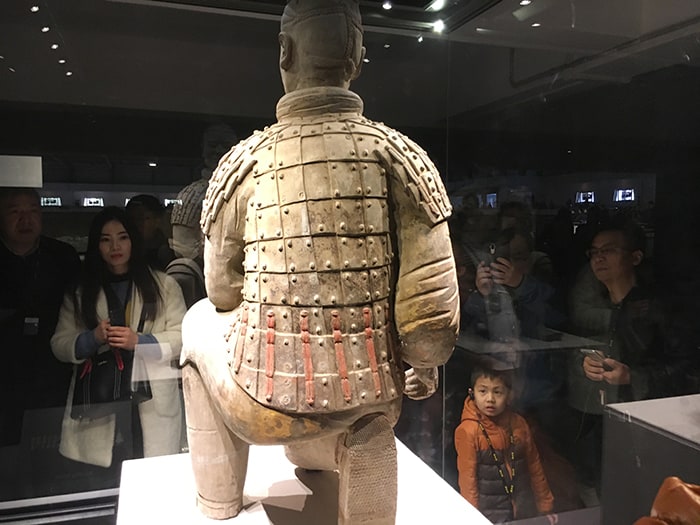
Where are the Terracotta Warriors?
We drove about an hour out of Xi’an departing at 8am to get here nice and early. Already there were bus loads of tourists waiting in line and wandering around the huge facility that is made up of several buildings housing museums and built over the three enormous pits to protect them.
Archeologists still work here from Monday to Friday every week.
But it’s Pit 1 we’ve come for.
And wow, what an impact when you step inside the massive building housing this army of soldiers all facing forward down in trenches. They are life-sized and different heights to reflect their roles, the tallest being generals, they also have different and very detailed uniforms and facial features.
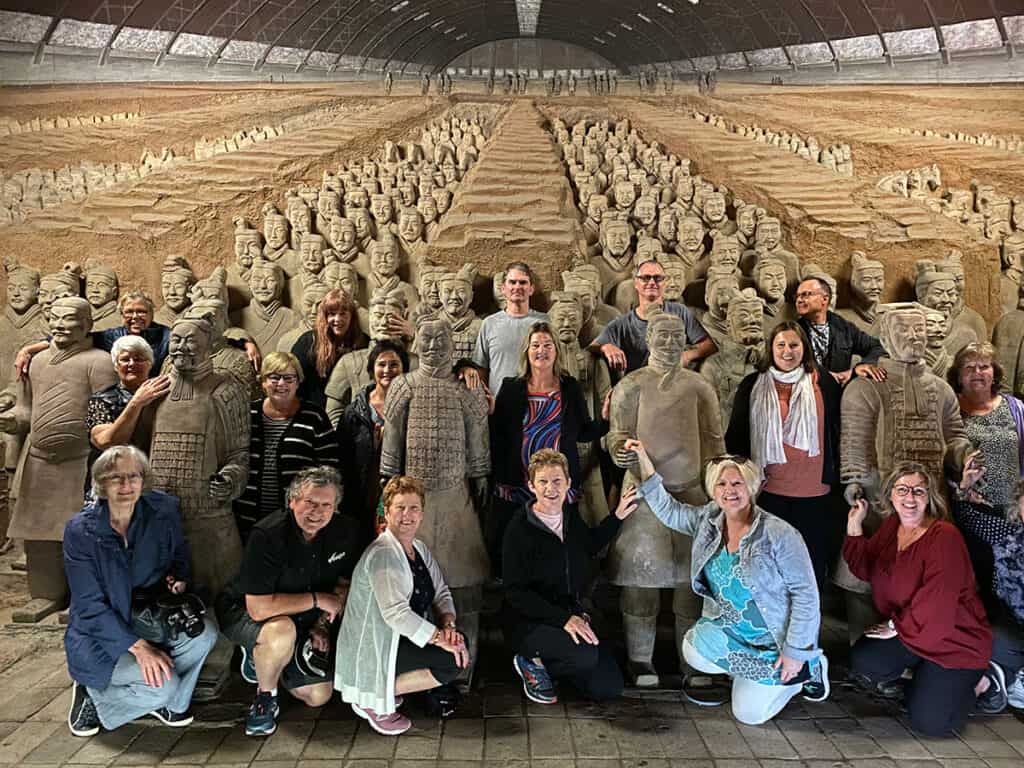
Look closely, because no, we’re not actually standing amongst the precious soldiers!
They have discovered about ten moulds of faces but then by hand the finer features were added to every one. The same applies to leg armour and other embellishments.
The location for this city sized mausoleum was chosen for the rich jade and gold mines, but actually the army is located about a kilometre from the tomb of Emperor Qin.
But after he was buried here it is said they surrounded his tomb in rivers of (poisonous) mercury and it’s for this reason that the actual mausoleum has not been unearthed. And besides, these days with the advances in thermal imaging, they are able to see exactly what lies beneath without having to disturb and ruin any relics.
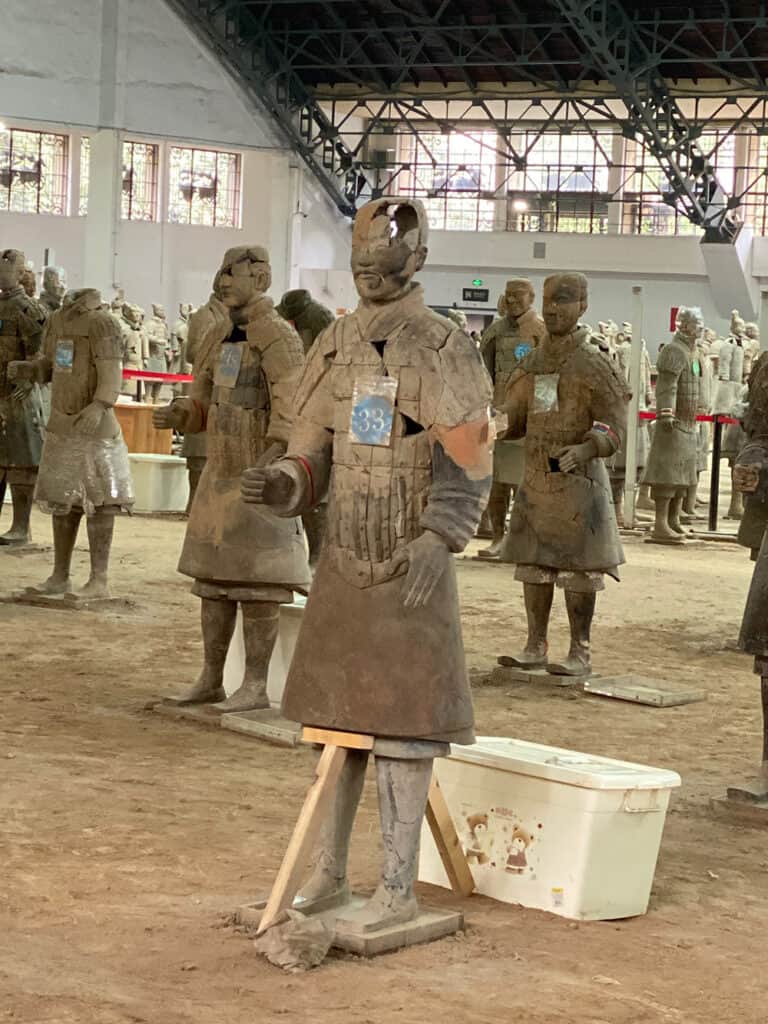
This is probably the way forward for uncovering such precious finds which get damaged in the digging up. The warriors that have been restored no longer have colour as the light has damaged and faded it, yet they can see colour in the 3D imaging of other parts of the mausoleum.
The location of the gate to the tomb was meant to be so secret that it is said that all the craftsmen were killed after they had completed their mission to create this army of warriors.
Honestly, that got to me. Such a brutal time to be alive in many places of the world, and such an interesting view of death. Maybe it was an honour, who knows. When we were in Rome a few months ago we heard that the creator of the 24-hour clock had his eyes gouged out and his tongue cut off so he could never reveal how he designed it.
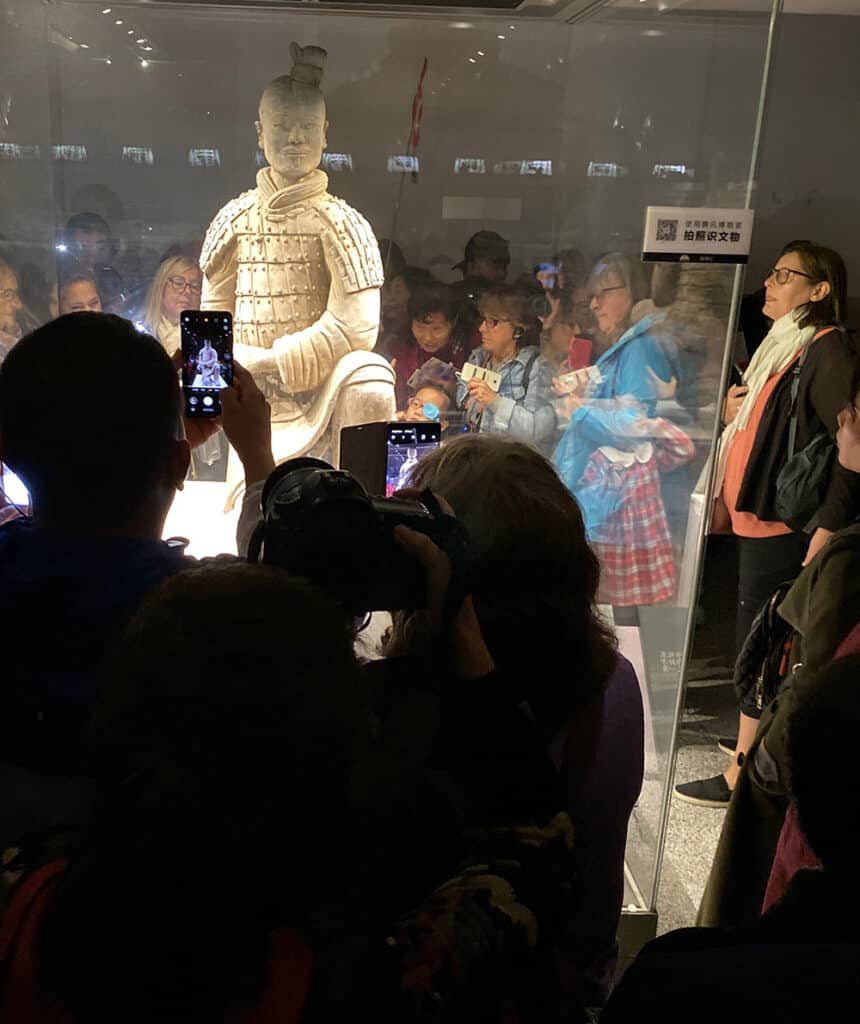
How long should I allow to visit the Terracotta Army?
I would say allow at least three hours. And do get there as early as possible to get ahead of the crowds.
There are three pits to take your time wandering through, taking photos and taking it all in.
Then there are the museums with items in glass cases that have been salvaged, some still with their painted colours, plus the information that you’ll want to read.
Then as you leave there is a veritable street market of delicious food stalls and souvenir shops to peruse.
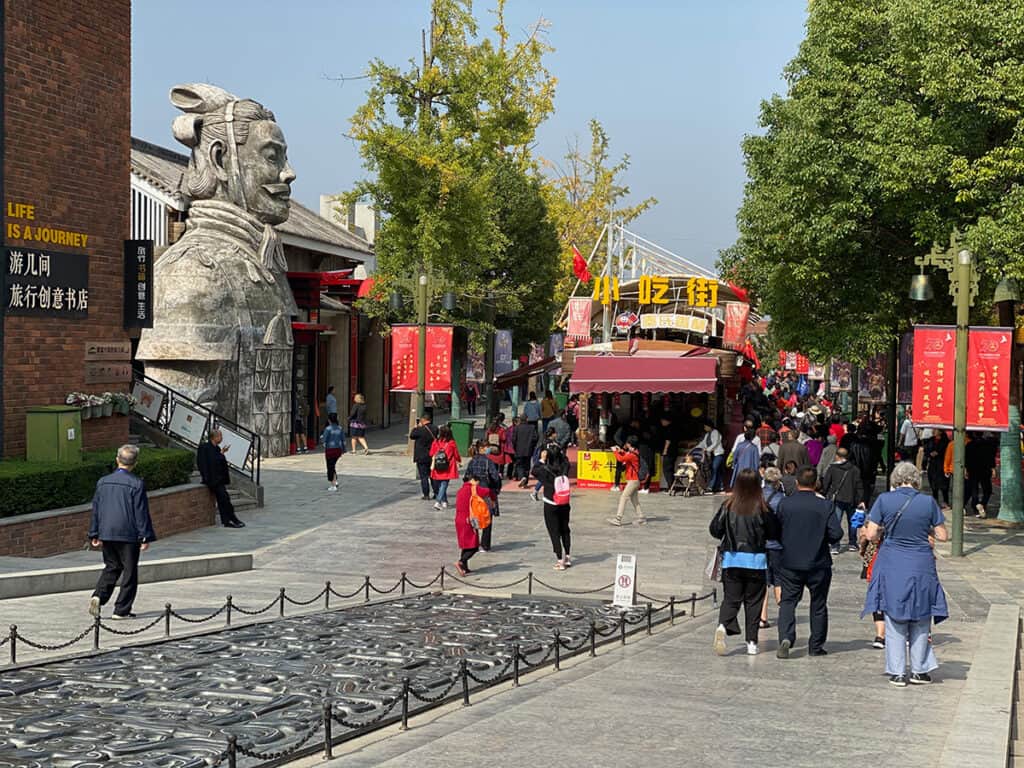
Read my post on 25 things to know before you go to China!
Plus you’ll love my visit to Chengdu to see the giant panda sanctuary, including tiny babies in an incubator.
See my post on my three-night Cruise on the Yangtze River
If you are planning a visit to China, you might like to also see my post on the highlights of Beijing including the Great Wall, Forbidden City and Tiananmen Square


Lyndsay Clarke
Monday 7th of January 2019
Hi Megan, did you know if you have a disability, you get free entry into most of China's Tourist Attractions, including the Terracotta Warriors - vaguely remember reading on the info at some tourist sites something about older people have free entry....
Megan
Monday 7th of January 2019
I did not know that, thanks Lyndsay. Great advice.